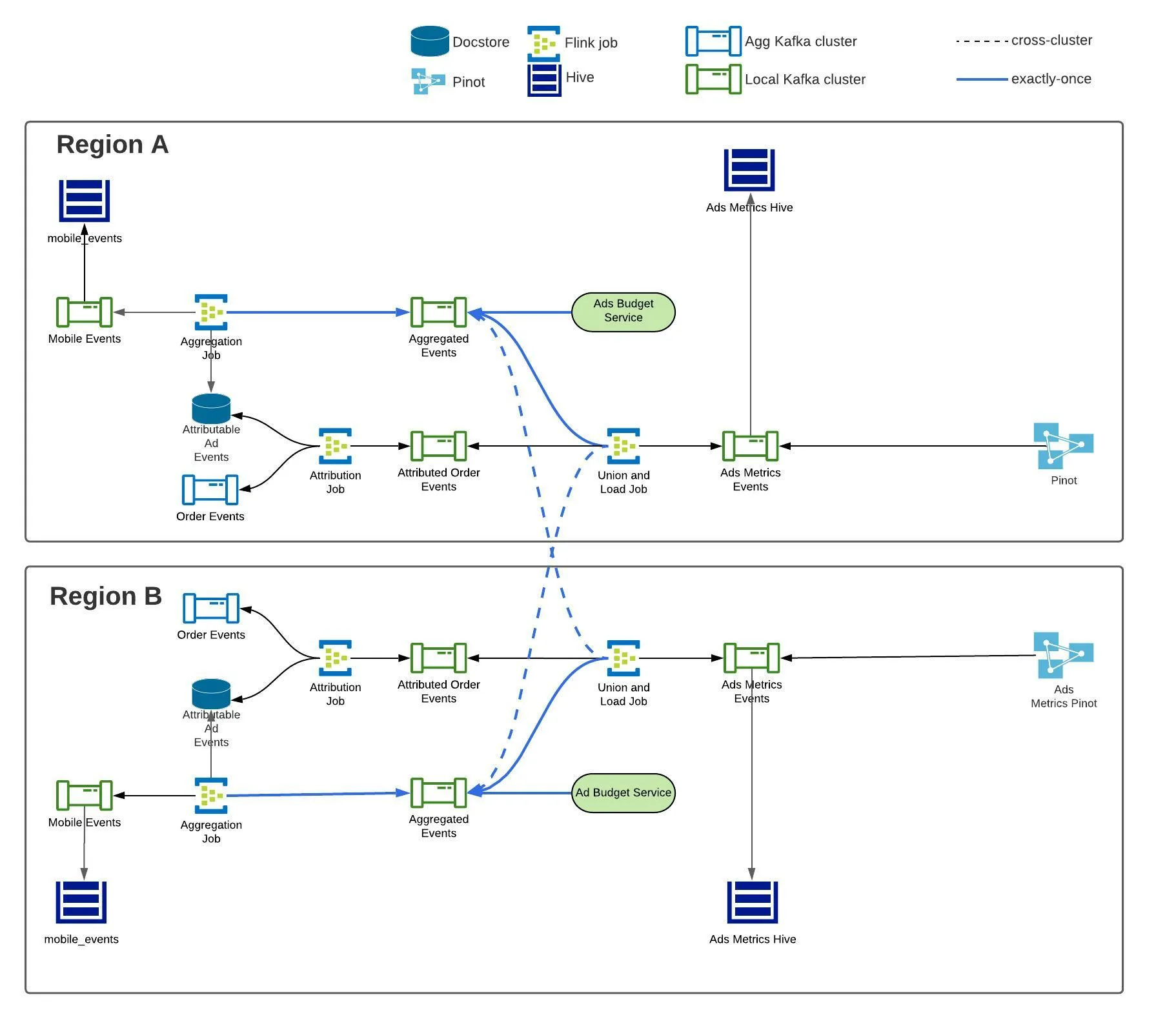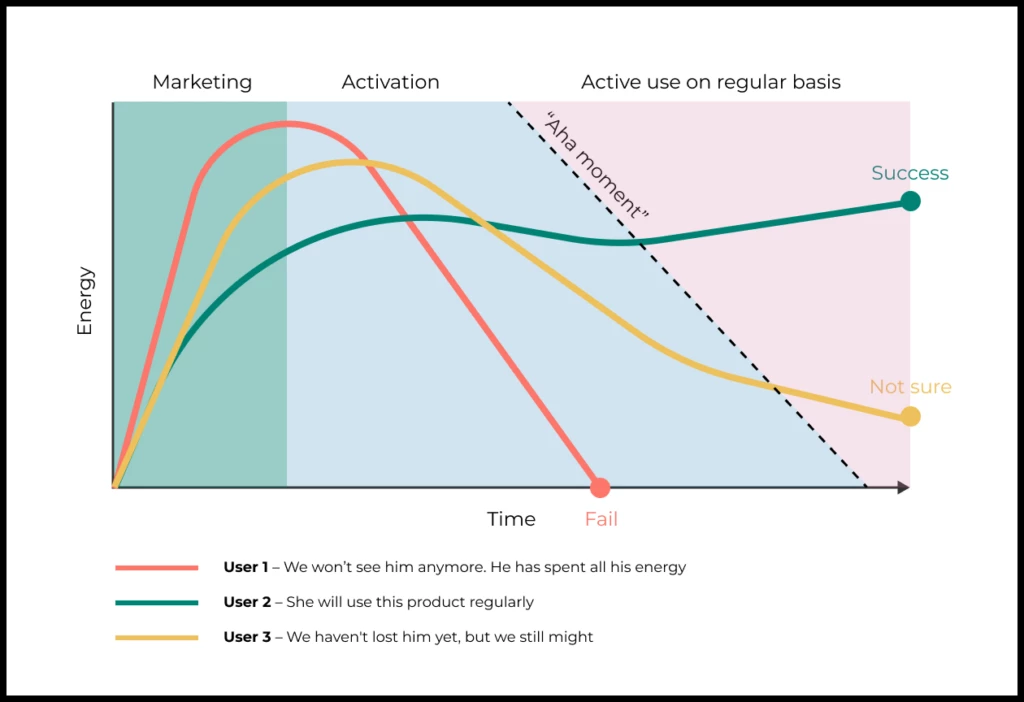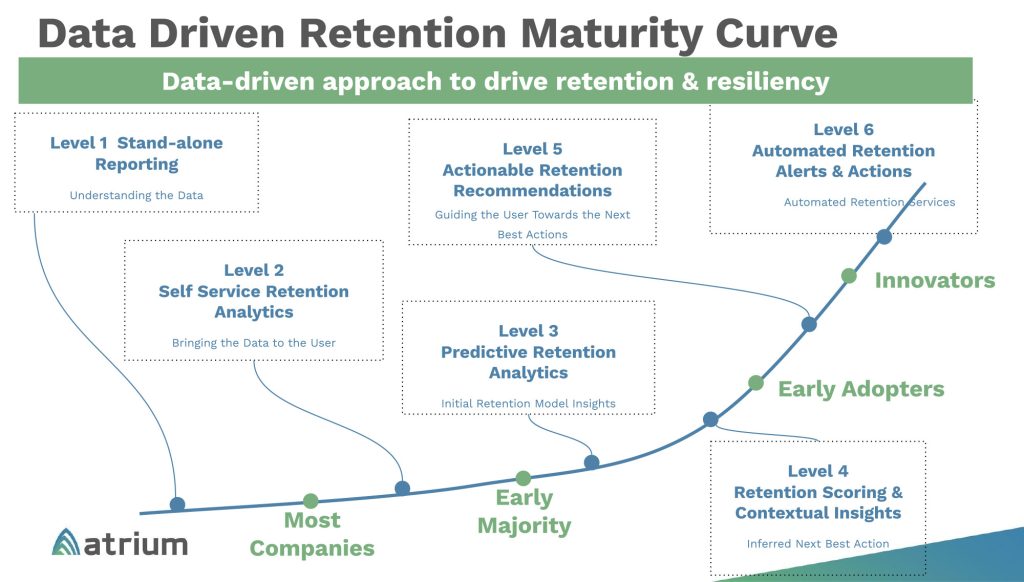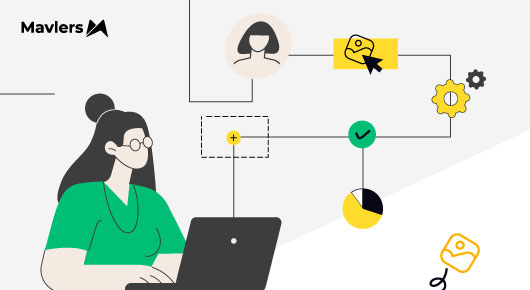Customer lifecycle marketing is no longer about static campaigns or rigid pre-scheduled flows. Since modern consumers expect contextual, frictionless exchanges, lifecycle leaders can no longer afford “one-size-fits-many” communications. Instead, event-driven customer journeys are redefining onboarding and retention practices.
Lifecycle strategists who master this approach can increase revenue velocity, compress onboarding timelines, and continuously orchestrate retention levers based on real-world context, rather than retroactive campaign calendars. Teams that embrace event-triggered customer journeys build more responsive and resilient systems that evolve with customer needs.
But, it’s easier said than done. Customer.io’s State of Lifecycle Marketing Report (2025) shows 60% prioritize acquisition, yet attribution and data integration remain key challenges.
Without clear visibility, acquisition wins can slip and retention suffers. As you’re right to worry. You need a partner who turns insights into action and signals into growth.
Lifecycle customer marketing is at the core of our approach. Our four-fold model—strategize, attract, nurture, and build—creates a holistic growth engine that not only drives conversions but deepens customer relationships, strengthens retention, and unlocks long-term loyalty.
Today, we explore techniques customer lifecycle marketing teams can implement to accelerate onboarding and boost retention using event-driven lifecycle marketing principles.
Why event-driven customer journeys matter
5 core design principles for event-driven customer journeys
Accelerating event-driven onboarding
Event-driven retention strategies
Measurement & feedback across journeys
Common implementation pitfalls to avoid
Strategic recommendations for lifecycle leaders
From reactive to event-driven lifecycle marketing
Why event-driven customer journeys matter
The foundation of lifecycle marketing is progression: a customer moves from awareness to onboarding, into habitual usage or repeat purchase, and eventually—if not carefully nurtured—towards churn. What separates event-triggered customer journeys from traditional scheduled campaigns is their ability to dynamically:
- Capture micro-signals in real time: A push notification on the exact moment of first product activation carries much higher relevance than one scheduled 48 hours later.
- Adapt the pathway at branch points: Customers who completed onboarding actions receive reinforcement workflows; those who skipped them trigger remediation flows.
- Shorten feedback loops: Marketers receive engagement outcomes within minutes, allowing rapid optimization of touchpoints.
Logic of event-driven customer experience
The philosophy behind event-driven customer journeys draws on what the Actionable Research team describes as “episodic memory.”
Unlike factual (semantic) memories, these episodic memories are deeply contextual and directly influence a customer’s behavior. When a person decides whether to buy from you again or recommend you to others, they recall these specific memories. This is why it’s critical to treat every customer interaction as a significant event and to have a system in place that captures and measures the details of these experiences from the customer’s perspective.
Bottom line, event-driven customer journeys operationalize the flow of customer intent.
For onboarding and retention, this directly translates into measurable acceleration and better adaptive customer journey mapping.
5 core design principles for event-driven customer journeys
Event-driven architecture (EDA) fundamentally transforms how microservices interact by enabling asynchronous communication through events rather than direct synchronous calls. This creates systems where services can evolve and scale independently without affecting others, leading to better overall scalability.
The decoupled nature of EDA means that failure in one service doesn’t cascade to others. Events can be stored and retried by brokers when consumers are temporarily unavailable, ensuring no data is lost and maintaining high system availability. Netflix, Uber, and LinkedIn use EDA to orchestrate their event-driven lifecycle marketing initiatives.
Uber’s utilization of EDA
Uber uses Apache Kafka to process billions of events from drivers, passengers, and system operations. Every action (ride requests, driver availability, payments) triggers immediate events. Multiple services process these events simultaneously for real-time updates.

Source: Uber Blog
Kafka acts as a central nervous system, handling all the actions that happen within the Uber ecosystem as events. For example, when a passenger requests a ride, that’s an event. When a driver accepts a trip, that’s another event. Each of these events is published to a specific Kafka topic. (A topic is like a category or a log of related events.)
The architecture supports Uber in driving customer lifecycle marketing outcomes.
But now, to move beyond conceptual enthusiasm, lifecycle leaders must structure event-driven journeys using rigorous design principles:
1. Single source of event truth
Customer behaviors—logins, product activations, cart abandonments, referral completions—must flow into a centralized event pipeline, typically managed in platforms such as Snowflake, Segment, or event buses (Kafka, Pub/Sub). Without this, marketers tend to operate on conflicting signals, causing latency and redundancy.
2. Event granularity before automation logic
Define event taxonomies with clear naming conventions and payloads (“checkout_started” vs. “transaction_initiated”). Good architecture ensures the same event can feed multiple journey stages. Too broad (just “transaction”) and journeys lack nuance; too granular (separate events for “clicked-red-button”, “clicked-green-button”) and the automation layer collapses into noise.
3. Customer state resolution
Each event should update a persistent customer profile state in the CRM/CDP. Journeys should not only react to single triggers but understand evolving context. For example, a “subscription_canceled” event should update retention flags across email, push, and support systems, not only trigger a single reactivation campaign.
4. Redundancy & real-time hygiene
Deduplication matters. Systems must handle multiple event emissions (such as duplicate app launches) without spamming the customer.
Deduplication + throttling logic should always precede messaging orchestration.
For example, you can use event processing middleware or ETL layers to filter duplicate events within a set time window, and apply identity resolution with event aggregation to consolidate multiple raw signals into one canonical event per user session, ensuring only meaningful triggers reach the journey engine and preventing spammy communications.
5. Journey governance layer
Prevent overlap when multiple journeys trigger from the same event.
Governance frameworks—using prioritization logic in Braze or SFMC—ensure a “progressive onboarding journey” overrides a “generic welcome series” when both qualify.
You achieve this on SFMC, for example, by using a combination of data-driven logic and journey configurations. Just a few standard steps:
- The most common method is to use strict exclusion criteria in your journey entry and exit settings. For example, set the generic welcome series to allow entry only if a contact is not in the progressive onboarding journey, and use an exit rule to automatically eject anyone who joins the onboarding path.
- Use a Decision Split to route contacts; for example, check at the start of a welcome series if they qualify for progressive onboarding, then remove them from the current journey and inject them into the higher-priority one via API Event or Automation Studio.
- You can use Automation Studio and SQL to pre-rank journeys; so a master query identifies the “winning” journey for each contact and feeds only that entry data extension.
These principles unify marketing, data engineering, and customer operations around journeys that scale rather than fragment customer lifecycle marketing.
Looking to get more from SFMC?
Mavlers helps businesses worldwide navigate SFMC’s complexity, unlocking its full potential to boost engagement, simplify campaigns, and deliver measurable results. Book a call!
Accelerating event-driven onboarding
Onboarding is where event-driven marketing demonstrates its highest leverage, often cutting activation drop-off rates by double digits. Instead of linear email drips, the onboarding funnel should trigger nudges and reinforcements only when—and only where—friction emerges.
Progressive action-linked messaging
Progressive action-linked messaging keeps communication tightly tied to customer behavior, ensuring messages remain timely and relevant. By designing event-based onboarding workflows, teams can adapt to context with precision:
- Trigger a tip or walkthrough only when the customer fails to execute a required first step (e.g., profile setup not completed within 2 hours).
- Suppress the message if the action was completed—reducing fatigue and keeping communications contextual.
Data enrichment triggers
Zero-party preference capture works best when tied to a natural event. Instead of asking for preferences on signup, trigger the preference collection request after the first purchase is logged, when trust is higher and intent is clearer. This timing significantly reinforces customer activation strategies, since data enrichment aligns with demonstrated behavior:
- By this stage, the customer has both invested effort and experienced value. As a result, their willingness to share preference data increases significantly.
- Signal-backed timing lets customers provide data that actually aligns with demonstrated behaviors.
- At the enrichment trigger, journeys can dynamically route questions by channel—an interactive email if the purchase was online, an in-app mini-survey if triggered during session two, or even an SMS fallback if the user exited checkout.
- Collecting preferences later also ensures you capture actual needs instead of projections. Customers often don’t fully know what they want at signup, but after their first transaction or success milestone, those preferences crystallize.
By tying enrichment to natural events in the lifecycle, marketers ensure higher fidelity preference data enters the CRM/CDP.
Time-to-value compression
Emit an event when a customer successfully experiences core product value (“first payment processed,” “first playlist completed”). Use this as the trigger to accelerate them out of event-driven onboarding flows into engagement journeys. By measuring the time delta between signup and value realization, marketers quantify onboarding acceleration rates.

Source: Go Practice
But remember, relationships don’t leap to depth overnight. They grow step by step. Therefore each interaction needs to be nurtured with gradually rising levels of commitment.
One classic experiment makes this clear: participants were first asked to place a small sticker in their window supporting a cause. A week later, they were invited to display a larger sticker. Finally, they were asked to put a full sign in their front yard. Most of those who had started small eventually agreed to the sign. By contrast, almost no one in the control group, who had never been asked for the smaller actions, said yes.
Cross-channel synchronization events
Modern onboarding spans email, push, in-app, and customer success touchpoints.
With event-based onboarding workflows, a Slack alert can notify a success manager the moment a B2B trial user takes a high-intent action, aligning human outreach with automated flows.
Speaking of cross-channel synchronization in the context of customer lifecycle marketing, Braze is particularly effective for this:
- Use Braze’s Canvas to model onboarding flows triggered by custom or system events. (Braze supports branching using Action Paths with conditional logic to manage dynamic experiences across channels.)
- Track high-intent actions from users via Braze SDK or API calls that send the relevant custom events into Braze.
- Within a Braze Canvas journey, use the “Webhook” action to send data (like user ID, event info, timestamp) to external systems like Slack.
- Configure Slack’s Incoming Webhooks or use a connector in an integration platform to receive the webhook from Braze and post real-time alerts.
- Coordinate Braze’s messaging channels with the Slack alert so automated follow-ups and human outreach happen in harmony.
Maximize the impact of Braze
Is your Braze setup underperforming? We brands unlock the full potential of their features, driving measurable lifecycle growth and revenue impact. Book a call today!
Facilitate habit integration
Habits drive human behavior. Our brains are wired for efficiency, automating decisions into routines. This “brain automation” means people gravitate toward ritualized behaviors—checking their phone on waking, scrolling while commuting, or browsing before bed. Products that align with these ingrained rhythms integrate seamlessly into daily life.
Consider the following tips to facilitate habit integration in customer lifecycle marketing:
- Identify natural gaps: Look for “empty moments” like waiting in line or commuting, where attention is available.
- Leverage mobile presence: Use devices people already carry to deliver value in these micro-moments.
- Trigger by context: Location-based reminders or time-sensitive nudges work best when tied to real behavior.
- Enhance, don’t interrupt: Streamline existing routines instead of demanding new ones. Make the product an unobtrusive layer in what users already do.
Take Facebook. Notifications act as external triggers, the newsfeed stimulates satisfaction, and over time, checking the app becomes an automatic, repeated behavior.
But at the same time, keep in mind that habits should enhance user control, not diminish it.
Every habitual interaction must provide real benefit. Users should be made to understand why certain features encourage regular use.
Event-driven retention strategies
In customer lifecycle marketing, retention optimization must move beyond preventative churn campaigns. Event-driven retention strategies constantly monitor latent signals of disengagement and deploy countermeasures before the revenue risk becomes acute.

Source: Atrium
Usage drop-off detection
Spotting disengagement early is key to retention. Instead of waiting until users vanish completely, modern systems look for subtle patterns that indicate declining activity:
- Use dynamic baselines: Replace static rules with cohort-based thresholds. For instance, flag a “weekly-engager” only after they deviate significantly (e.g., 2 standard deviations) from their group’s norm, reducing false positives and adapting to diverse behaviors.
- Track compound absence: Look beyond single signals and combine missed actions to create a stronger, weighted indicator of true disengagement.
Behavior-based award triggers
Incentives shape user behavior, but rigid structures often backfire. Smarter reward design adapts to different usage patterns and encourages deeper engagement.
- Apply flexible reward curves: Replace rigid rules (e.g., “every 5th purchase = reward”) with exponential or diminishing models—casual customers unlock earlier to build momentum, while heavy buyers face higher thresholds to prevent over-subsidization.
- Reward breadth, not just frequency: Incentivize cross-category or multi-feature use, such as a retail bonus for purchases across three categories or a SaaS reward for adopting adjacent features, to build deeper, stickier engagement.
Proactive service journeys
Issues like billing failures or service outages don’t have to blindside your customers. Anticipating problems and tailoring communication keeps trust intact:
- Predict and prevent failures: Use telemetry and machine learning (e.g., card BIN ranges, decline rates, billing cycles) to trigger proactive interventions like “update payment method” reminders before issues occur.
- Prioritize outage communication: Apply severity models so high-value, high-usage accounts get immediate alerts, while low-usage users are tagged for lighter, contextual follow-up.
Predictive churn intervention
Not all churn risks are alike. So, personalizing retention paths and pacing interventions ensures users feel supported, not pressured. Combined with retention-focused marketing journeys, brands can build multi-layered safety nets that catch disengagement before churn sets in. To that end, a few things to keep in mind:
- Avoid one generic retention path: Feed churn-prediction events with top driver tags. Journeys should split: pricing-sensitive customers get discount levers, adoption laggards get onboarding tutorials, etc.
- Prevent intervention fatigue: Customers often “ping-pong” between risky and safe states. Apply suppression windows after a save offer is redeemed, even if the predictive model again flags churn risk. This requires tracking last intervention outcome alongside churn risk probabilities.
Measurement & feedback across journeys
The efficacy of event-driven lifecycle marketing rests on measurement loops: whether interventions actually shorten onboarding, lengthen retention, or improve expansion revenue.
Key metrics lifecycle leaders should align with include the following:
- Time-to-First-Value: Track the completion of a key onboarding step.
- Activation Lift: Use A/B testing to measure the conversion rate for a specific event. For example, ‘Did users who received a welcome email convert to paid users at a higher rate than those who didn’t?’
- Churn Prediction: Define clear, measurable signals (e.g., ‘User has not logged in for 10 days after a trial started’) and track the accuracy of the prediction model against actual churn.
- Revenue Velocity: Focus on standard revenue metrics like ARPU or CLV, and analyze how specific interventions impact these metrics over time. You can also measure the percentage of users who upgrade to a higher tier within a specific time frame.
- Retention Sensitivity: Define a specific cohort of your “at-risk users” and measure the redemption rate for a specific intervention. Use a control group to compare.
These metrics directly inform your customer activation strategies while also revealing how well adaptive customer journey mapping translates into measurable growth.
Common implementation pitfalls to avoid
Unfortunately, event-driven journeys in customer lifecycle marketing are not free from operational risk. Key pitfalls include:
- Latency from data pipelines: If events arrive minutes later, onboarding nudges feel misaligned. Optimize event transport and avoid batch-heavy systems for lifecycle-critical triggers.
- Over-triggering fatigue: A single action might emit multiple events (button click + view + scroll). Without throttles, customers drown in redundant nudges.
- Lack of suppression architecture: If a reactivation journey doesn’t suppress after successful reactivation, customers receive irrelevant win-back campaigns post-purchase.
- Siloed event ownership: When engineering, analytics, and marketing define events independently, journeys break. Governance requires shared taxonomy ownership.
Avoiding these pitfalls separates proven lifecycle orchestration from experimental setups.
Strategic recommendations for lifecycle leaders
Sustained impact in lifecycle marketing requires more than tactical wins. Leaders need structural shifts in how journeys are designed, measured, and scaled:
- Adopt an event-taxonomy-first mindset before designing customer-facing flows.
- Invest in low-latency infrastructure or at minimum event buffering that reduces lag under heavy volumes—milliseconds matter during onboarding.
- Design retention nets as lattices, not campaigns—intersect cross-channel signals to build recovery meshes, not isolated nudges.
- Redefine KPIs in boardroom-relevant terms: time-to-value, velocity, salvage rate, indexing growth around marginal signal intervention ROI.
- Scale capability maturity. Pair CRM strategists with data engineers in cross-functional pods for system literacy and agility.
Wrapping up: From reactive to event-driven lifecycle marketing
The future of lifecycle marketing isn’t built on more emails, bigger drips, or heavier discounts. It’s built on the ability to interpret and act on customer intent the moment it reveals itself. Event-driven customer experience is the foundation here—reshaping how brands accelerate onboarding and build trust through intent-driven relevance.
For lifecycle teams, the mandate is clear: move from campaign scheduling to intent orchestration, from channel silos to event fabrics, from vanity metrics to velocity.
Ready to rewire your retention-focused marketing journeys around event-triggered lifecycle flows?
Let’s design the system that turns signals into sustainable growth. Connect with us for a 30-min no-obligation call!



Chintan Doshi - Reviewer
Chintan is the Head of Email & CRM at Mavlers. He loves email marketing and has been in the industry for 7+ years. His track record of email marketing success covers building email programs from scratch and using data-driven strategies to turn around underperforming accounts.
Susmit Panda - Content Writer
A realist at heart and an idealist at head, Susmit is a content writer at Mavlers. He has been in the digital marketing industry for half a decade. When not writing, he can be seen squinting at his Kindle, awestruck.
When to use Salesforce Flow vs. Agentforce: A journey-level perspective
From engagement to retention: Predicting & boosting HubSpot customer success